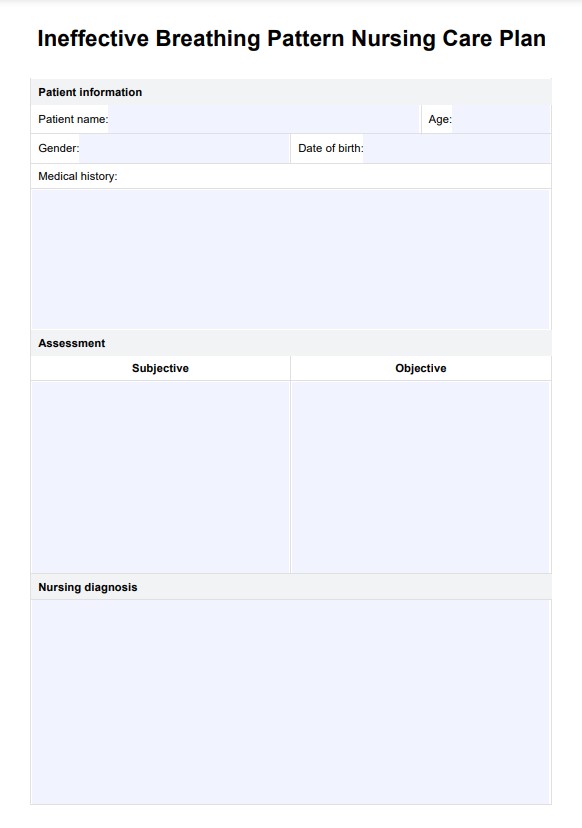An ineffective breathing pattern related to pneumonia is often evidenced by an increased respiratory rate, a shallow and irregular breathing rhythm, and the use of accessory muscles for respiration. Patients may also exhibit signs of distress, such as nasal flaring and cyanosis. These patterns indicate the body's struggle to maintain adequate oxygen levels due to the inflammation and fluid accumulation in the lungs caused by pneumonia.

Ineffective Breathing Pattern Nursing Care Plan
Streamline patient care with our Ineffective Breathing Pattern Nursing Care Plan template, ideal for effective respiratory management.
Ineffective Breathing Pattern Nursing Care Plan Template
Commonly asked questions
The breathing pattern of pneumonia is often characterized by an increased respiratory rate and shallow, irregular breaths. This is due to the body's efforts to compensate for the decreased lung function caused by inflammation and fluid buildup in the lungs.
The nursing care plan for pneumonia may include administering prescribed antibiotics and other medications, monitoring vital signs and oxygen saturation levels, providing supplemental oxygen as needed, and encouraging deep breathing exercises to improve lung function. It also involves assessing the patient's respiratory status regularly and monitoring for any changes or complications. Additionally, nurses play a crucial role in educating patients on proper coughing techniques, maintaining adequate hydration, and promoting rest to aid in the recovery process.
EHR and practice management software
Get started for free
*No credit card required
Free
$0/usd
Unlimited clients
Telehealth
1GB of storage
Client portal text
Automated billing and online payments











